Haemaphysalis longicornis
Common name: Asian longhorned tick
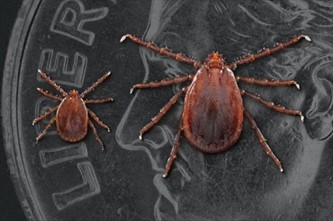
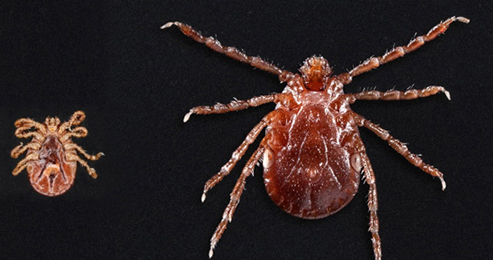
Left: Nymphal and adult female Asian longhorned tick on dime, top view. Right: Nymph and adult female, underside. Photos: CDC/DVBD
- Geographic Distribution
Asian longhorned ticks (ALHTs) are not native to the United States but have been present as an invasive species since at least 2017. The first detection of ALHTs in Indiana occurred in April 2023. Indiana is the 19th state to have detected ALHTs.
Visit the U.S. Department of Agriculture’s Asian longhorned tick page for the most current map.
Current distribution in Indiana
Medical entomologists at the Indiana Department of Health conduct active surveillance for Asian longhorned ticks and other ticks that are important to human and animal health.
To see where ALHTs have been detected, visit the Indiana Tick-borne Disease Surveillance dashboard and select "Ticks not yet associated with human diseases" from the disease dropdown menu.
- Life Cycle
The Asian longhorned tick life cycle consists of four stages (egg, larva, nymph and adult) and can be completed in as little as six months. These ticks attach to and feed on three different animal or human hosts during their lifetimes (once as larvae, once as nymphs, and once as adults). They are aggressive feeders and feed on a variety of host species, including pets, livestock, wildlife, and people; however, they appear to be less attracted to humans when compared with native ticks such as American dog ticks and Lone Star ticks.
ALHT females can reproduce without needing to mate (parthenogenesis) and can lay up to 2,000 eggs at a time. Male ALHTs are uncommon in invasive populations. The short life cycle, lack of dependence on male ticks for reproduction, and high egg counts enable this tick species to spread rapidly and reach high numbers quickly in new areas.
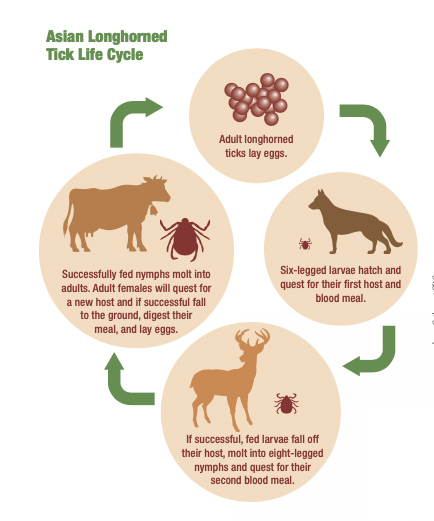
Graphic: Asian Longhorned Tick Life Cycle. North Central IPM Center.
- Commonly Associated Diseases
While laboratory studies have shown that ALHTs are capable of carrying certain pathogens that cause disease in people, such as the ones that cause Rocky Mountain spotted fever, Heartland virus, and Powassan virus , we don’t have evidence that they have transmitted these pathogens to people in the US.
ALHTs are mainly considered pests of livestock animals. Severe ALHT infestation of individual livestock animals can cause stress, decrease growth and meat or milk production, and can even cause death due to blood loss.
ALHTs can also carry one of the parasites that causes theileriosis (Theileria orientalis) and transmit it to cattle. Clinical signs of this economically important disease in cattle can include fever, lethargy, loss of appetite, anemia, jaundice, diarrhea, swollen lymph nodes, late-term pregnancy loss, and death.
- Prevention
While there is no evidence that ALHTs are causing human disease in the United States, the Indiana Department of Health recommends that all Hoosiers take precautions to avoid tick bites. Please see our tick prevention page for more information.
Livestock producers can take the following precautions to protect their animals against tick bites:
- Treat your livestock for ticks. Regular tick treatments can be effective against ALHT. Consult your veterinarian about which products to use.
- Practice tick prevention on feedlots and pastures, such as keeping grass and weeds trimmed and clearing away brush.
- Check your livestock for ticks regularly.
- If you have found a tick on a pet, horse, or livestock animal that you suspect is an Asian longhorned tick (ALHT), please save the tick in a plastic baggie and call your veterinarian to request a consultation.
- You may also call the Indiana State Board of Animal Health (BOAH) at 317-544-2400 to report any unusual looking ticks or large infestations.
Please visit the U.S. Department of Agriculture webpage for more information about Asian longhorned ticks.
- Images
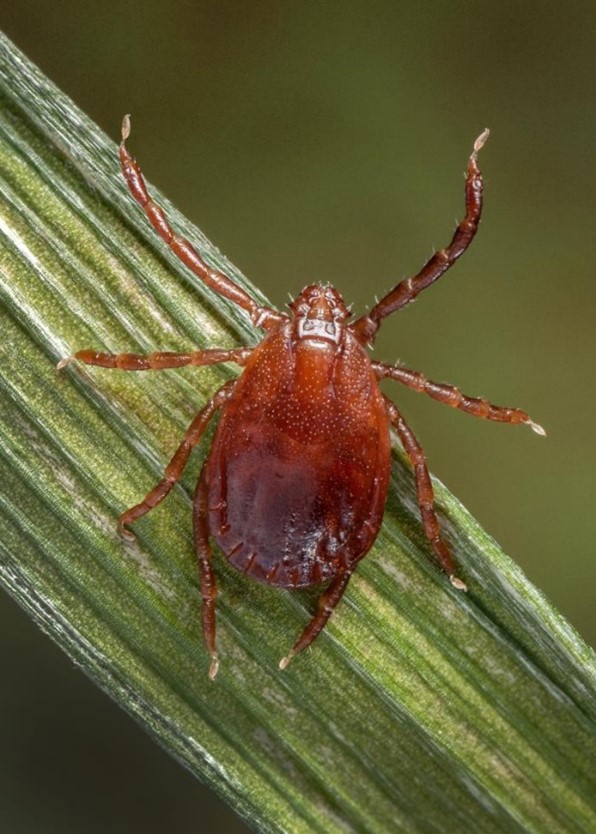
Female Asian longhorned tick. Photo: Centers for Disease Control and Prevention.
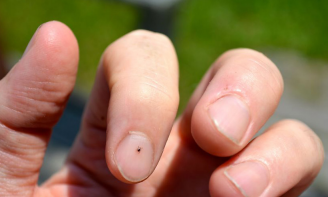
The adult life stage of the Asian longhorned tick is about the size of a sesame seed. Photos: Centers for Disease Control and Prevention.
Resources
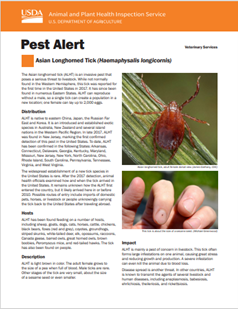
Pest Alert: Asian Longhorned Tick (Haemaphysalis longicornis) (usda.gov)

